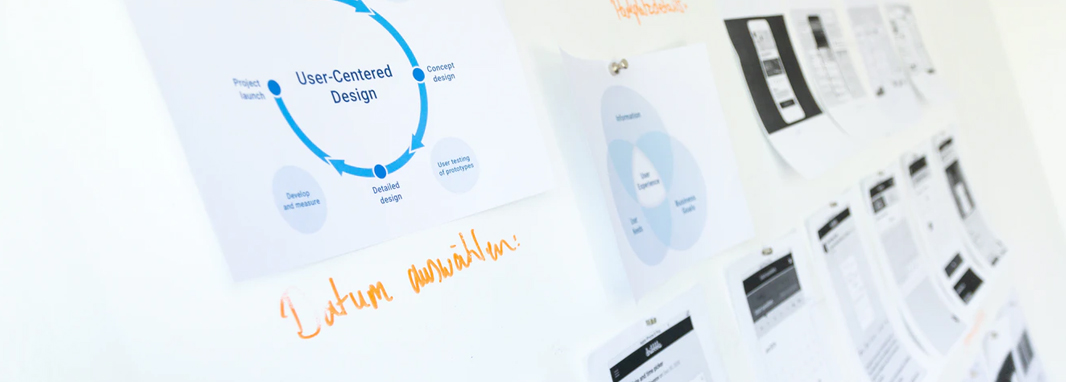AI doesn’t start with AI. It starts at the company level.
Dr. Mark Esposito
Automation and AI continue their march into the global business ecosystem across all its touchpoints. Baking an AI algorithm layer into your software is getting simpler. The reason for that - sustainable progress in machine learning, computer vision, deep learning, and natural language processing.
Is AI disrupting business for companies? Well, according to Gartner, the use of artificial intelligence in business has grown 270% over the past four years.
Notably, investment in artificial intelligence is increasingly coming from businesses outside the tech space. AI in business success stories are becoming more numerous, from Amazon obtaining operational efficiencies using its AI-powered warehouse robots, to GE Digital maintaining its mechanical equipment by leveraging AI for their predictive platform.
We Provide AI-Powered Solutions from Concept to Launch.
The cornerstone of AI businesses success is to look at artificial intelligence opportunities through the lens of business capabilities rather than technologies.
Main uses of AI in business
Harvard Business review insists that AI stands to cause the most powerful effect in marketing services, supply chain management, and manufacturing. AI solutions will add valuable capabilities to your existing products and services, as they can automate, predict, and respond when humans can’t. But how AI can be used in business? It can deliver three major business needs discussed below. These are Robotic Process Automation, Cognitive Insights and Cognitive Engagement.
To leverage AI effectively for your business needs, consider finding marketing agencies on Sortlist, specializing in AI integration and innovation.
Business processes automating
Much business AI we see live today consists of RPA (robotic process automation). These are automated robot workers that take up a list of actions emulating what people would normally do. Of course, there are no physical "robots". These are software agents that process data in digital space.
Though RPA cannot replace a human worker, it frees up time and effort for employees so that the business can run with greater efficiency. These robot workers have the ability to input information like a human, while eliciting it from many backend systems.
On top of that, RPA is the least complex and least expensive among the uses of AI - it brings high and quick returns on investment. Businesses use RPA to automate administrative work, financial systems, and other straightforward tasks. It disrupts center corporate business processes around coordination and control: scheduling, resource allocation, and reporting.
RPA helps companies from numerous industries, such as banking, manufacture, ecommerce, retail, insurance, healthcare, etc., complete a wide variety of tasks. Just check the enormous potential of digital transformation below.
For call centers, RPA can be a tool for informational consolidation about a customer on a single screen. Thus, agents have all the data they need from multiple systems to provide unparalleled customer service.
In [healthcare], RPA schedules appointments for patients. For AI insurance companies, robots are used to insert and process claims faster and with fewer errors than a human.
RPA helps to onboard new employees according to the established process. It can ensure newcomers receive all the information required to comply with company guidelines. Robotic process automation copes well with CRM systems updating, imports data to the billing system, monitors sales metrics. This type of AI for business performs customers' credit and background checks, ultimately deciding if the applicant is worthy of receiving credit.
Insight through data analysis

High-speed data crunching and automation are inherent to AI and business of the present day. But where this advanced analytics come from? It is ensured by machine learning algorithms that can detect patterns in vast volumes of data, interpret their meaning, and make decisions just like a human. This insightful computing adapts to different contexts with minimal human supervision. Moreover, Cognitive analytics systems can be implemented with a chatbot or search assistant that understands queries and interacts with humans in natural language.
Cognitive applications can predict what a customer is likely to buy, detect a credit card or insurance fraud, automate personalized targeting of digital ads.
In essence, this AI technology able to cope with unexpected and unfamiliar input and adjust the response on its own rather than adhere to a prescribed set of answers. It is mainly aimed at deepening customer engagement. Most Cognitive applications can intuitively serve customers based on deep insights, their attitudes, feelings, needs, and desires.
Using digital means, a cognitive company gleans robust, actionable penetrations into their customers' behavior prospects. This data asset is a perfect foundation to build targeted marketing - more accurate, more efficient, and more scalable than traditional approaches. Cognitive insights give numerous devices a kind of situational awareness to work together and solve problems.
For instance, Target employed cognitive engagement to pinpoint, which customers were awaiting a baby by analyzing the types of items they bought. This data allowed them to cover a personalized mailer, which was automatically sent to their home. No human was needed for the whole process.
Direct interaction with people

Across other artificial intelligence applications, Cognitive engagement is the most powerful tool to personalize interactions with customers in real-time. It leverages the data processed by predictive analytics to deliver insights about the customer's behavior in the future and carefully craft the strategies for individual tastes and expectations.
Compared to cognitive insights, engagement takes it one step further: it puts the strategies formed by customers' habits, location, and other relevant data points into action and engaging with customers.
A Swedish bank, SEBank, employed a digital customer support agent for not only their customers but also their 14,000 employee workforce. Amelia handles thousands of requests all by herself. This agent is a shining example of artificial intelligence and business alliance, which proved to be paramount for both employee and customer satisfaction. Amelia can reset passwords, verify identities, troubleshoot credit card issues, and provides IT support for the bank employees.
Cognitive applications bring about "extreme personalization," which denotes engaging the right customers with the right content at the right time. This advantage is available to marketers, thanks to AI, its decision making capability. They are able to deliver personalized content and produce highly effective marketing campaigns.
Another example of artificial intelligence for business is the Starbucks campaign - AI for personalization. This is something beyond sending customers emails on their birthdays. They set the foundation for merging digital marketing and physical stores and generate serving recommendations for customers approaching their stores. The cognitive company uses customers' location data to know when they approach. Even further, they take into account the weather, timing of the orders, and of course, buying history.
Synergy of insight and engagement
Ultimately, the future of business depends on the coexistence of humans and robots. While AI has indicated the first few steps on this journey, cognitive RPA lights up the path ahead. Through insights of a company, the impact of RPA can become noticeable in months, while cognitive technology has its ability that implements effectively by narrowing down to weeks.
Artificial intelligence business paradigm shifts, businesses try to implement new projects, combining elements from all three categories to harvest the benefits of cognitive insights.
Despite their rapidly expanding experience with the cognitive tool, companies may face significant obstacles in cognitive applications adoption. Many of them don't know where to begin. Businesses may feel they lack the capacity for cognitive technologies as well.
Steps to Implement AI in your business

When it comes to AI in business implementation, the biggest challenges for businesses to tackle are the increasing data complexity and IT expenditure.
Organizations with the forward-thinking approach are exploring its innovative ways to control RPA and cognitive technologies and gain competitive advantages in the growing digital economy.
If you are considering AI deployment in your company but don't know where to start, let's get it straight. There is no foolproof playbook for AI-led transformation. Still, there are some steps to overcome the most common pitfalls.
Understand AI
Before embarking on artificial intelligence in business, first off, companies have to find the most suitable uses for ai to perform their tasks. Each of them has its strengths and limitations. For example, robotic process automation, fare transparent in how they do their work, but not capable of learning and improving.
To handle this, businesses will need to leverage the capabilities of its key employees, such as data scientists, who have statistical and big-data skills. If you have no data science or analytics capabilities in-house, you’ll probably have to build an ecosystem of external service providers or hire vendors. A team experienced in the development of artificial intelligence for business will ensure your investment is no waste of time and money for pursuing the wrong technology.
Match a process with a technology
Determine which areas of the business could benefit most from cognitive insights. Typically, they can be parts of the company where its “knowledge” (meaning the data derived from data analysis) is at a premium but, for some reason, is not available. Here an internal inspection may be of help. You will need to determine the most effort- and time-consuming processes and the activities that bring tangible results.
While internal determinants play a vital part, businesses should also conduct external research to partner with the best RPA vendor.The right RPA implementation partner will advise you on the scalability of RPA for your business and will help to predict and suggest the next best move for your business.
Along with that, you need to keep in mind what your competitors implement. Indeed, you can’t call them up and ask how they are using artificial intelligence in business. But you can always check the web and social media presence, press releases, news coverage, and blogs. Besides, cast a wider net, to perform more extensive research on the industry as a whole.
Select integration experts
Once your business is ready for implementation from an organizational standpoint, then it's time to start the technical one. It all depends on what you want, how much developer bandwidth you have in-house, and how you provision your IT operations. Most probably, the best for companies is to outsource experienced AI specialists who have already implemented similar projects. Thus, you will get the appropriate capacity while keeping the central coordinating function.
Launch a pilot and scale it up
Before rolling out the artificial intelligence and business projects across the entire business, launching a pilot is a must. The reason behind this is the gap between current and desired AI capabilities is not always clear. Especially for initiatives that have high potential business value or allow the company to test different technologies at the same time.
But it doesn't stop here. Many businesses have managed to launch cognitive project pilots. Still, organization-wide implementation, which appears to be the most challenging step, failed. To avoid such failures, companies need detailed plans for scaling up, which requires collaboration between technology experts and business leaders.
As cognitive projects are developed, and lessons are learned, core workflows might require redesign. This means that the division of labor between humans and AI will likely change. Well-organized and recurring redesign of workflows is essential to ensure that humans and computers increase each other's powers and compensate weaknesses.
Future of AI companies

The future is coming quickly, and artificial intelligence will undoubtedly be its part. As this technology develops, the world will see new startups, numerous business applications, and consumer uses. Along with the internet of things, artificial intelligence has the potential to remake the economy dramatically.
Through AI adoption, information-intensive domains such as marketing, healthcare, financial services, education, and professional services are expected to become more valuable and less expensive to society. Business routine in every industry, such as processing transactions, repeatedly answering the same questions, and extracting data from endless records, will be taken away by machines, releasing people to be more productive and creative. Cognitive technologies are also an incentive for making data-intensive technologies succeed, including autonomous vehicles, IoT, and mobile and consumer technologies.
We hope this helped to get a better grasp on AI. To to get the ball rolling and drive business outcomes, get onboard with Zfort Group.
We Provide AI-Powered Solutions from Concept to Launch.





